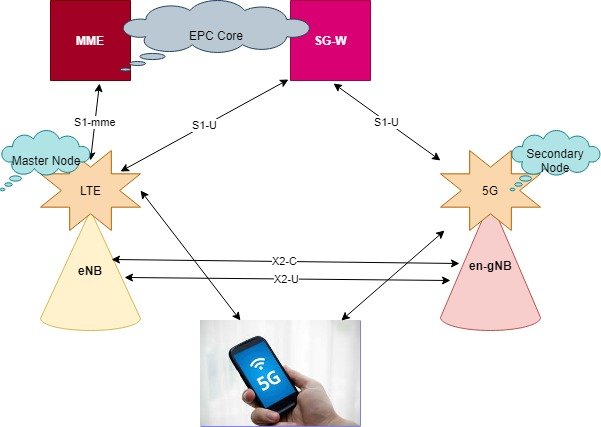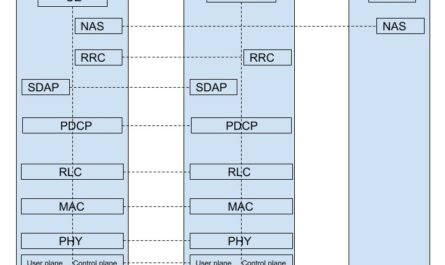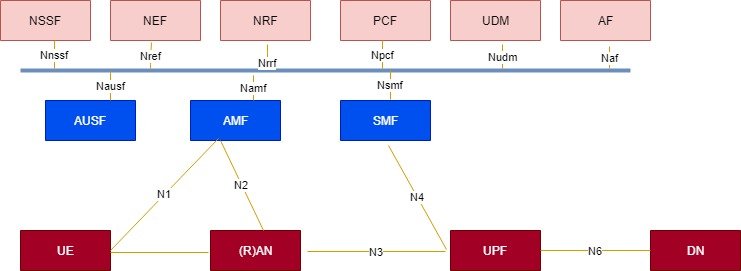5G Core Network : Service Based Architecture

The 5G core architecture is called Service Based Architecture (SBA) framework. Each element is defined as a network function and all the network functions are connected via a common interface. Each Network Function (NF) provides services to other authorized NF through that common interface. Thus, Modularity and re usability are easily provided by such an SBA approach.
Support of virtualized deployment
Service base architecture of 5g core Network will support virtualization deployment. Hence, a SBA network can be deployed as fully distributed, fully redundant, stateless, and fully scalable. Within a same network set, many Network Instances can be present. So, with this virtualization, services can be provided from anywhere.
Consider an example of UDR set. When a UE invoke a UDR services like registration, this virtualization will help to route the request to any UDR within the set of UDRs.
This will also help to turn off any specific instance of UDR for planned maintenance. There is a UDR auto recovery feature too without any service disruption.
Local hosting of services and Edge Computing
With 5G, most of the services provided to the user will be hosted closer to the user. It means services will be hosted locally and this local hosting of services is provided through the Edge Computing capability of 5G technology.
Edge computing will enable an operator and a 3rd party to execute the services close to the UE’s access point of attachment. So, with this awesome feature the end-to-end latency and the load on the transport network will reduced drastically.
To make this happen, the 5GCN will select a UPF close to the UE. And executes the traffic from the UPF to the local Data Network via a N6 interface. These are some of the Edge computing features:
- This Supports concurrent local and central access to a data network. This will enable low-latency services.
- Application influence on traffic routing.
- Support of URLLC (Ultra Reliable Low-Latency) services.
- Support for different Session and Service Continuity modes.
- And Support of Local Area Data Network.
5G core network : Network slicing
Network slicing is a new concept in 5G. A network slicing is a set of network elements and these NFs are specialized to provide a particular service. For example we can have a Network slice for IoT, one for general UEs and one for V2X. Different users may have different requirements like latency, mobility and data rates. So, we can have Network Slicing based on user types also.
The Network Slice Selection Function (NSSF) selects Network Slice for a UE. The UEs may use multiple Network Slices simultaneously.
Each PLMN will support end-to-end Network slicing. Interoperability is also possible with other PLMNs, e.g. the IoT slice from operator X can interconnect directly with the IoT slice of operator Y.
Operator can decide based on business need, how many network slices to deploy and what functions and features to share across multiple slices.
The characteristics of each slice are defined in terms.
- QoS.
- Bit rate.
- Latency, etc.
For a given slice, the above characteristics are either pre defined in the 3GPP Standard or are operator defined. In 3GPP, there are three types of pre defined slices:
- Type 1 is dedicated to the support of eMBB.
- The Type 2 is for URLLC.
- Type 3 is for MIoT support.
Since these slices are predefined, so this allows inter PLMN operation with reduced coordination effort between operators. But in case of operator-defined slices, they enable more differentiation among network slices and it requires more effort.
5g core network : Unified access control
The 5g core Network is adaptable. Contingent upon administrator arrangements, organization situations, endorser profiles, and accessible administrations. Various criteria will be utilized in figuring out which user to be permitted or blocked when congestion happens in the 5G System.
These various criteria for access control are related with Access Identities and Access Categories. The 5G framework gives a solitary brought together access control where administrators control get to endeavors dependent on these two aspects.
The network will limit the UE access on a per-access class basis. And additionally there are the quality Management Congestion management, the DNN based Congestion management and also the network slice-based Congestion management.
Policy framework and QoS support
A policy framework is supported for Session, Access and Mobility control, QoS and charging enforcement, as well as policy provisioning in the UE.
5G system defines a flow based QoS framework, with two basic modes:
- with QoS.
- Without QoS.
Without any specific QoS signalling flows, the standardized packet marking is applied. This informs the QoS enforcement functions what QoS to provide. While In case of QoS, offer and negotiation happens.
Network capability exposure
- SEES stands for Service Exposure and Enablement Support.
- eFMSS stands for (enhanced) Flexible Mobile Service Steering.
These two features allow the operator to expose it’s network capabilities like QoS policy to third party ISPs or ICPs.
Network capabilities will be exposed to the third party. For example operators may allow the third party to customize a dedicated network slice for diverse use cases. Also, operators may allow the third party vendors to manage a trusted third party application in a Service Hosting Environment to improve user experience, and efficiently utilize back haul and application resources.



